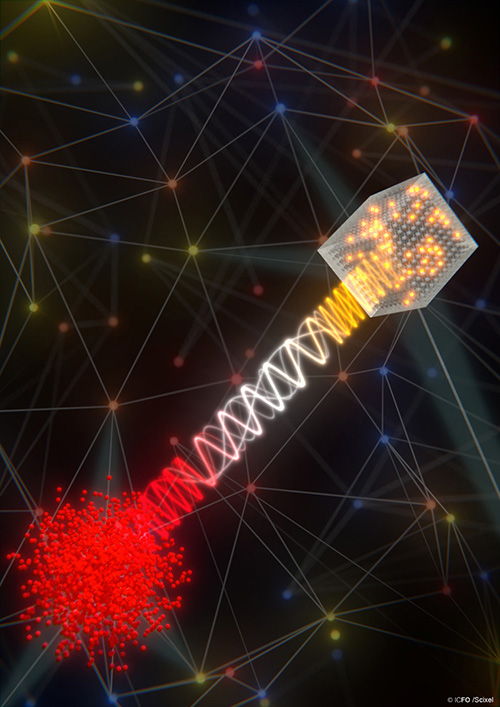Classical information networks such as the internet have revolutionized our way of transmitting and processing data. Now, scientists are trying to build the quantum version of such networks, which hold promise to provide radically new capabilities compared to their classical counterparts. Quantum information networks (consisting of matter quantum nodes and quantum communication channels) could for example enable perfectly secure data transmission, enhanced data processing via distributed quantum computing or advanced clock synchronization applications. While it is generally agreed that photons are the best choice to transmit quantum information, the optimal matter system for building the quantum nodes is still an open question, as each system provides different functionalities. Therefore, the implementation of a hybrid network has been proposed, searching to combine the best capabilities of different material systems.
In a recent study, published in Nature, ICFO researchers led by ICREA Prof. Hugues de Riedmatten, have achieved an elementary “hybrid” quantum network link and demonstrated for the first time photonic quantum communication between two very distinct quantum nodes placed in different laboratories, using a single photon as information carrier.
In their study, the ICFO researchers used two very distinct quantum nodes functioning at different wavelengths: the emitting node was a laser-cooled cloud of Rubidium atoms and the receiving node a crystal doped with Praseodymium ions. They transmitted a qubit from one system to the other, using quantum frequency conversion techniques. The qubit emitted by the cold atomic ensemble was first converted to telecom wavelength, then transmitted to another laboratory via an optical fiber and finally converted to the frequency of the crystal, where it was absorbed and stored.
The results of the study have shown that two very different quantum systems can be connected and can communicate by means of a single photon. The ability to perform back- and forth-conversion of photonic qubits at the telecom C-band wavelength shows that these systems would be completely compatible with the current telecom networks.
Reference
